Classic Chic, a timeless concept in the realm of fashion, captures the essence of enduring elegance and sophistication. In this article, we delve into the world of timeless style by exploring the Plaid Kilt—a garment that seamlessly blends tradition with contemporary flair.
Classic Chic is not just a passing trend but a statement of style that withstands the test of time. It embodies a unique combination of simplicity, grace, and individuality, making it a preferred choice for those seeking a wardrobe that transcends fleeting fashion fads.
At the heart of this exploration is the Plaid Kilt—a garment that epitomizes Classic Chic. Beyond being a piece of clothing, the Plaid Kilt is a symbol of tradition, history, and versatile fashion. This article aims to unravel the layers of its charm, from its historical roots to its present-day influence on modern style.
Join us on a journey through the allure of Classic Chic as we embrace the timeless style embodied by the Plaid Kilt. Discover why this garment has stood the test of time and continues to be a staple in the wardrobes of individuals who appreciate the fusion of heritage and contemporary fashion.
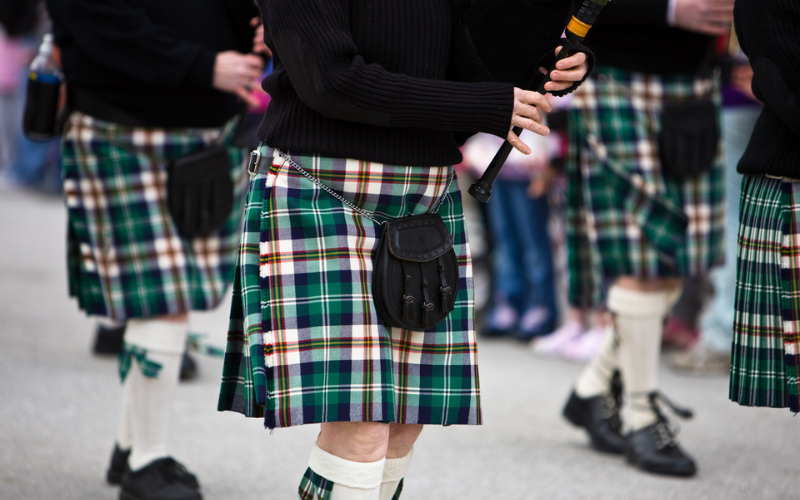
History of Plaid Kilts
The history of plaid kilts is deeply rooted in the cultural tapestry of Scotland. The word “kilt” itself is of Scottish Gaelic origin, translating to “fold” or “pleat.” The evolution of the plaid kilt is a fascinating journey that spans centuries.
1. Origins
The roots of plaid kilts extend deep into the history of Scotland, marking a distinctive chapter in the evolution of traditional attire. Dating back to the 16th century, the early versions of kilts were uncomplicated garments crafted from a single length of woolen cloth.
The fundamental design included wrapping the cloth around the body and securing it with a belt. However, the significant innovation that contributed to the characteristic look of plaid kilts was the introduction of pleats. Pleating served practical purposes, offering wearers greater freedom of movement and comfort.
As kilts evolved, the transition to tartan patterns became a defining moment. Tartan, a woven fabric with distinctive patterns and colors, became intricately associated with Scottish clans. Each clan developed its unique tartan, becoming a visual representation of familial or regional identity.
The Act of Proscription in 1746, following the Battle of Culloden, dealt a blow to the widespread wearing of kilts. This legislation, aimed at suppressing rebellious sentiments, banned traditional Highland attire, including kilts and tartans. The subsequent prohibition lasted for nearly four decades, impacting the popularity of kilts during that period.
The 19th century witnessed a resurgence of interest in Scottish heritage and culture, leading to the revival of the kilt. The Highland Romantic Movement played a crucial role in rekindling enthusiasm for kilts, especially fueled by Queen Victoria’s affection for Scotland and her acquisition of Balmoral Castle.
Military influence further solidified the kilt’s place in history. Highland regiments, known for their distinctive kilts, contributed to the garment’s enduring popularity. The military association not only preserved the kilt during challenging times but also added an element of pride and tradition.
Today, the origins of plaid kilts are woven into the rich cultural fabric of Scotland. From its humble beginnings as a practical garment to its elevation as a symbol of Scottish identity, the plaid kilt has traveled through time, leaving an indelible mark on both traditional and modern fashion.
2. Transition to Tartan
The introduction of tartan, a distinct woven pattern, marked a significant shift in the kilt’s design. Tartan patterns became associated with specific Scottish clans, serving as a visual identifier of familial or regional allegiance. This connection between kilts and identity strengthened over time, adding a layer of cultural significance.
3. Revival in the 19th Century
The 19th century witnessed a resurgence of interest in Scottish heritage and culture. This revival, known as the Highland Romantic Movement, played a pivotal role in rekindling enthusiasm for kilts. Queen Victoria’s fondness for Scotland and her purchase of Balmoral Castle further fueled the resurgence, with the royal family often donning tartan attire.
4. Military Influence
The association of kilts with military regiments, particularly Highland regiments, also played a role in their continued prominence. The distinctive appearance of soldiers in kilts became synonymous with Scottish military pride and prowess.
5. Symbol of Scottish Identity
In the modern era, the plaid kilt has transcended its military and clan-specific roots to become a symbol of Scottish identity.
6. Global Popularity
Beyond Scotland, plaid kilts have gained international popularity. Their unique blend of history,Today, people worldwide embrace the plaid kilt as a symbol of classic chic, connecting with its rich and diverse heritage.
The history of plaid kilts is a tale of evolution, suppression, revival, and global acceptance.
Why Choose a Plaid Kilt?
The versatility of plaid kilts makes them a wardrobe staple. From casual outings to formal events, these kilts effortlessly adapt to diverse settings, making them a preferred choice for individuals seeking style and comfort.
The plaid kilt stands as a versatile and timeless garment, offering a multitude of reasons why individuals choose to embrace its classic charm.
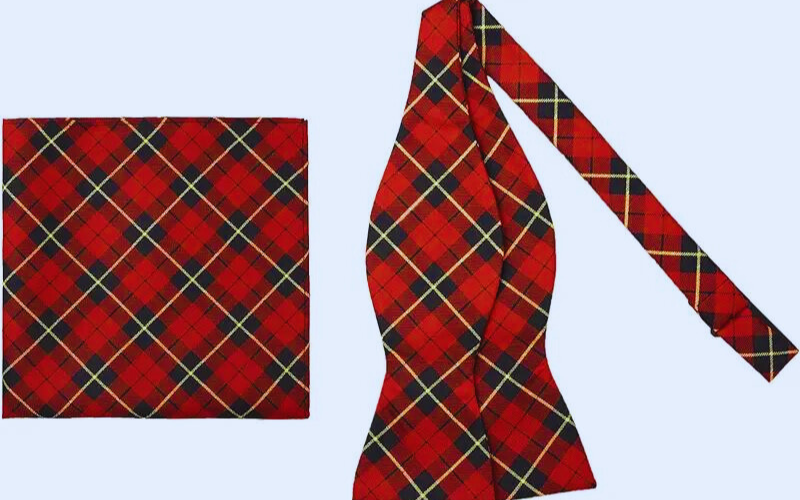
1. Versatility
Plaid kilts are renowned for their versatility, seamlessly transitioning from casual to formal settings. This adaptability makes them a go-to choice for various occasions, allowing wearers to express their style effortlessly.
2. Timeless Appeal
The enduring appeal of plaid kilts lies in their timeless design. Rooted in history, these kilts have transcended fashion trends, maintaining their relevance and elegance across generations.
3. Cultural Significance
Beyond being a fashionable item, plaid kilts carry cultural significance. Originally associated with Scottish clans, wearing a plaid kilt can be a nod to heritage and tradition, connecting individuals to a rich cultural tapestry.
4. Individual Expression
Plaid kilts provide a unique canvas for individual expression. The variety of tartan patterns and color combinations allows wearers to showcase their personality, making each kilt a distinct representation of personal style.
5. Comfort and Freedom
The design of plaid kilts, with its pleats and comfortable fit, ensures freedom of movement. Whether worn for a formal event or a casual outing, the comfort factor adds to the overall appeal of choosing a plaid kilt.
6. Adaptable in Various Settings
Plaid kilts effortlessly adapt to different settings and dress codes. They can be styled with a range of accessories and paired with various tops, making them suitable for weddings, festivals, or even everyday wear.
7. Symbol of Confidence
Wearing a plaid kilt often symbolizes confidence and a willingness to embrace one’s unique style. The boldness of choosing a classic garment that stands out in a crowd adds an element of self-assuredness to the wearer.
8. Blend of Tradition and Modernity
Plaid kilts beautifully blend tradition with modern fashion sensibilities. This fusion makes them relevant in contemporary settings while preserving the historical and cultural roots that define their essence.
9. Iconic Fashion Choice
Plaid kilts have been embraced by fashion icons and designers, solidifying their status as an iconic fashion choice. This recognition contributes to their popularity as a symbol of classic chic.
10. Admired Across Gender:
The appeal of plaid kilts extends across gender lines. While historically associated with men, modern fashion has embraced kilts for women as well, emphasizing inclusivity and breaking traditional gender norms.
Choosing a plaid kilt is more than selecting an outfit; it’s a deliberate choice to embody versatility, tradition, and individuality. Whether worn for its cultural significance, timeless appeal, or comfort, the plaid kilt remains a wardrobe staple for those seeking a classic and meaningful fashion statement.
How to Wear a Plaid Kilt Stylishly
Pairing a plaid kilt with different outfits requires a keen eye for style. Fashion enthusiasts can experiment with various combinations and accessories to create a unique and eye-catching look.
Quality and Durability of Plaid Kilts
Plaid kilts, with their timeless appeal and cultural significance, are not just garments but reflections of craftsmanship and tradition. The quality and durability of these iconic kilts are pivotal elements that ensure they stand the test of time, making them cherished wardrobe investments.
At the core of a durable plaid kilt is the choice of material. Traditionally crafted from high-quality wool or a wool blend, the material not only contributes to the kilt’s authenticity but also plays a vital role in its durability. Wool, known for its resilience, warmth, and luxurious feel, forms the foundation of a well-crafted plaid kilt. The carefully selected material sets the stage for a garment that not only looks elegant but also withstands the rigors of regular use.
The weaving technique employed in creating the tartan pattern is another crucial factor influencing the kilt’s quality. A tightly woven fabric not only enhances the aesthetics of the pattern but also contributes to the kilt’s strength and resilience. The interplay of colors and intricate design, when meticulously woven, adds a layer of sophistication to the kilt while ensuring its ability to endure wear and tear.
Stitching and construction are key aspects that distinguish a high-quality plaid kilt. Well-stitched pleats and a securely attached waistband are indicative of a kilt’s structural integrity. Precision in the construction process not only ensures that the kilt drapes elegantly but also prevents issues like unraveling or fraying over time. A focus on these details is a testament to the craftsmanship invested in creating a durable and long-lasting garment.
The weight of the fabric is a crucial consideration in both the look and durability of a plaid kilt. A medium to heavyweight fabric not only provides a graceful drape but also adds to the kilt’s ability to withstand the demands of regular wear. While lighter fabrics may be suitable for specific occasions, they might lack the durability required for everyday use, making the weight of the fabric a critical factor in the overall quality of the kilt.
Attention to detail further enhances the quality of plaid kilts. Even pleating, precise measurements, and carefully executed details in design contribute to the overall craftsmanship of the garment. The seamless integration of these details not only adds to the kilt’s aesthetic appeal but also ensures that every aspect of the garment is considered in its creation.
The presence of a lining in a plaid kilt can significantly impact both comfort and durability. A well-made lining adds structure to the kilt, preventing it from stretching or losing its shape over time. This feature not only contributes to the kilt’s longevity but also enhances the wearer’s comfort, making it an important aspect of the overall quality of the garment.
The permanence of the dye used for the tartan pattern is crucial for maintaining the kilt’s aesthetic appeal. High-quality dyes resist fading, ensuring that the colors remain vibrant and true to the original design even after repeated wear and washing. The ability of the dye to withstand the test of time contributes to the enduring beauty of the plaid kilt.
Quality plaid kilts are designed to withstand the demands of regular wear, showcasing resilience to the stresses of use. Whether worn at formal events, festivals, or everyday outings, a durable kilt should maintain its shape and appearance, embodying the enduring quality associated with this iconic garment. The durability of a plaid kilt is not just a testament to its construction but also a reflection of its ability to adapt to various settings while retaining its timeless allure.
Opting for reputable brands known for their commitment to quality is a wise choice when investing in a plaid kilt. Established brands often prioritize the finest materials and adhere to strict manufacturing standards, ensuring that their kilts meet or exceed expectations. The reputation of the brand becomes a reliable indicator of the overall quality and durability of the plaid kilt.
Assessing customer reviews and testimonials provides valuable insights into the real-world durability of a specific plaid kilt. The experiences of individuals who have worn the garment over time offer firsthand accounts of its quality and longevity. Positive reviews from satisfied customers contribute to the overall confidence in the durability of a chosen plaid kilt.
In conclusion, the quality and durability of plaid kilts are intricately woven into their essence. From the choice of material to weaving techniques, from stitching details to the weight of the fabric, every element plays a role in shaping a kilt that not only stands as a symbol of classic chic but also endures as a timeless piece of attire. Investing in a plaid kilt is not merely acquiring a garment; it is embracing a tradition, a culture, and a commitment to enduring style.
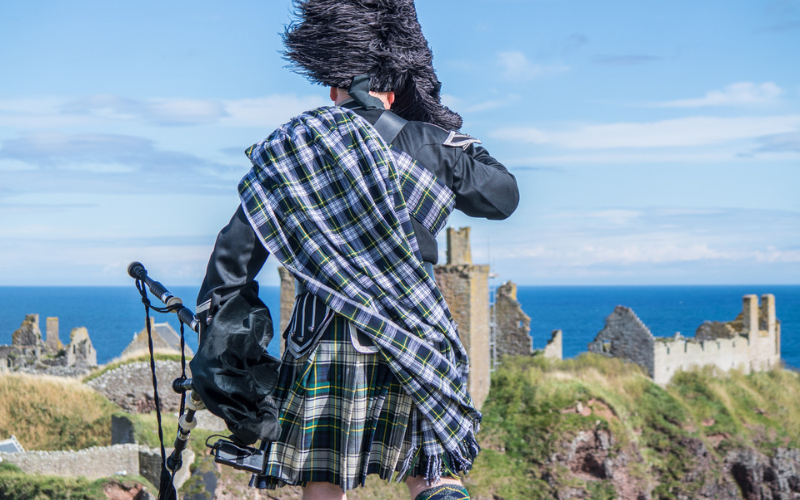
Plaid Kilts in Contemporary Fashion
In the fast-paced world of fashion, plaid kilts continue to make an impact. Recent fashion shows and designer collections showcase the enduring appeal of this classic garment.
DIY Plaid Kilt Customization
Encouraging readers to embrace their creativity, this section provides innovative ideas for personalizing plaid kilts. From embellishments to unique accessories, the possibilities are endless.
Celebrate Classic Chic Events with Plaid Kilts
Highlighting occasions where plaid kilts shine, readers are encouraged to make a statement at weddings, festivals, and other events. Personal anecdotes add a touch of authenticity to the narrative.
Maintenance Tips for Plaid Kilts
Ensuring the longevity of plaid kilts involves proper care and maintenance. Practical advice on cleaning, storage, and handling helps readers keep their kilts in pristine condition.
Plaid Kilt Brands to Explore
Presenting reputable brands known for their quality plaid kilts, this section provides a brief review of each brand. Readers can make informed choices based on brand reputation and customer reviews.
Customer Reviews & Testimonials
Real-life experiences from individuals who embraced the plaid kilt trend offer insights into different styles and preferences. Diverse perspectives contribute to the overall appeal of plaid kilts.
Cultural Impact of Plaid Kilts
Exploring the cultural diversity associated with plaid kilts, this section sheds light on how this classic garment transcends geographical boundaries, contributing to a global fashion culture.
Social Media & Plaid Kilt Trends
The influence of social media on fashion trends is undeniable. This section delves into the impact of platforms like Instagram and TikTok on the popularity of plaid kilts, showcasing user-generated content and emerging trends.
Conclusion
In the tapestry of fashion, the plaid kilt emerges not just as a garment but as a timeless symbol of classic chic. Its rich history, from humble origins to a resurgence fueled by cultural movements, reflects its enduring appeal. Choosing a plaid kilt is not merely a fashion decision; it’s an embrace of tradition, a celebration of versatility, and a commitment to individuality.
As we navigate through the quality and durability of plaid kilts, it becomes evident that these iconic garments are more than just pieces of clothing—they are investments in lasting style. From the carefully selected materials to the meticulous craftsmanship, each element contributes to a narrative of resilience and sophistication.
In conclusion, the plaid kilt invites individuals to partake in a journey of enduring style. Its timeless allure, deeply rooted in history, beckons fashion enthusiasts to embrace the elegance and versatility that only a classic garment can offer. The plaid kilt, with its quality, durability, and cultural resonance, continues to weave itself into the fabric of fashion, leaving an indelible mark on those who choose to adorn it.
FAQs
1. Can plaid kilts be worn casually?
- Absolutely! Plaid kilts are versatile and can be styled for casual outings.
2. Are there specific occasions to wear a plaid kilt?
- Plaid kilts are suitable for various occasions, from weddings to cultural events.
3. How do I personalize my plaid kilt?
- Get creative! Add unique accessories, embroidery, or patches to make it your own.
4. What materials are best for a quality plaid kilt?
- Opt for wool or a wool blend for authenticity and durability.
5. Where can I find reputable brands for plaid kilts?
- Explore well-known brands online or visit specialty stores for a curated selection.

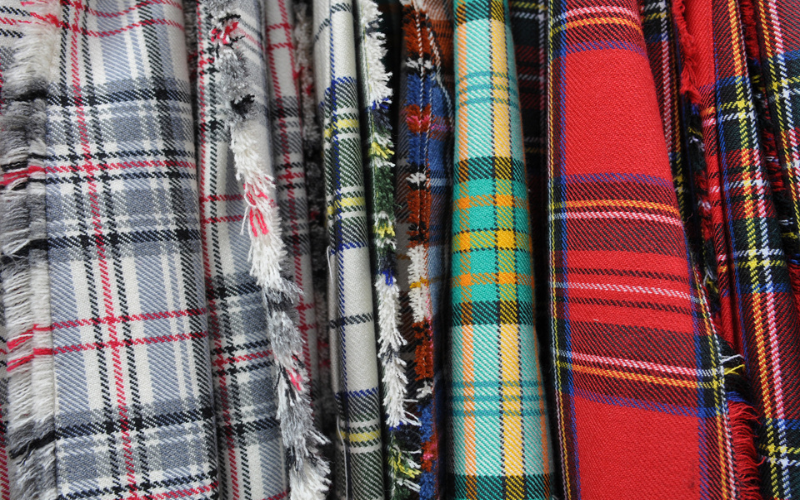
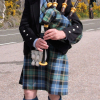
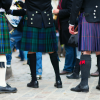
Leave a reply